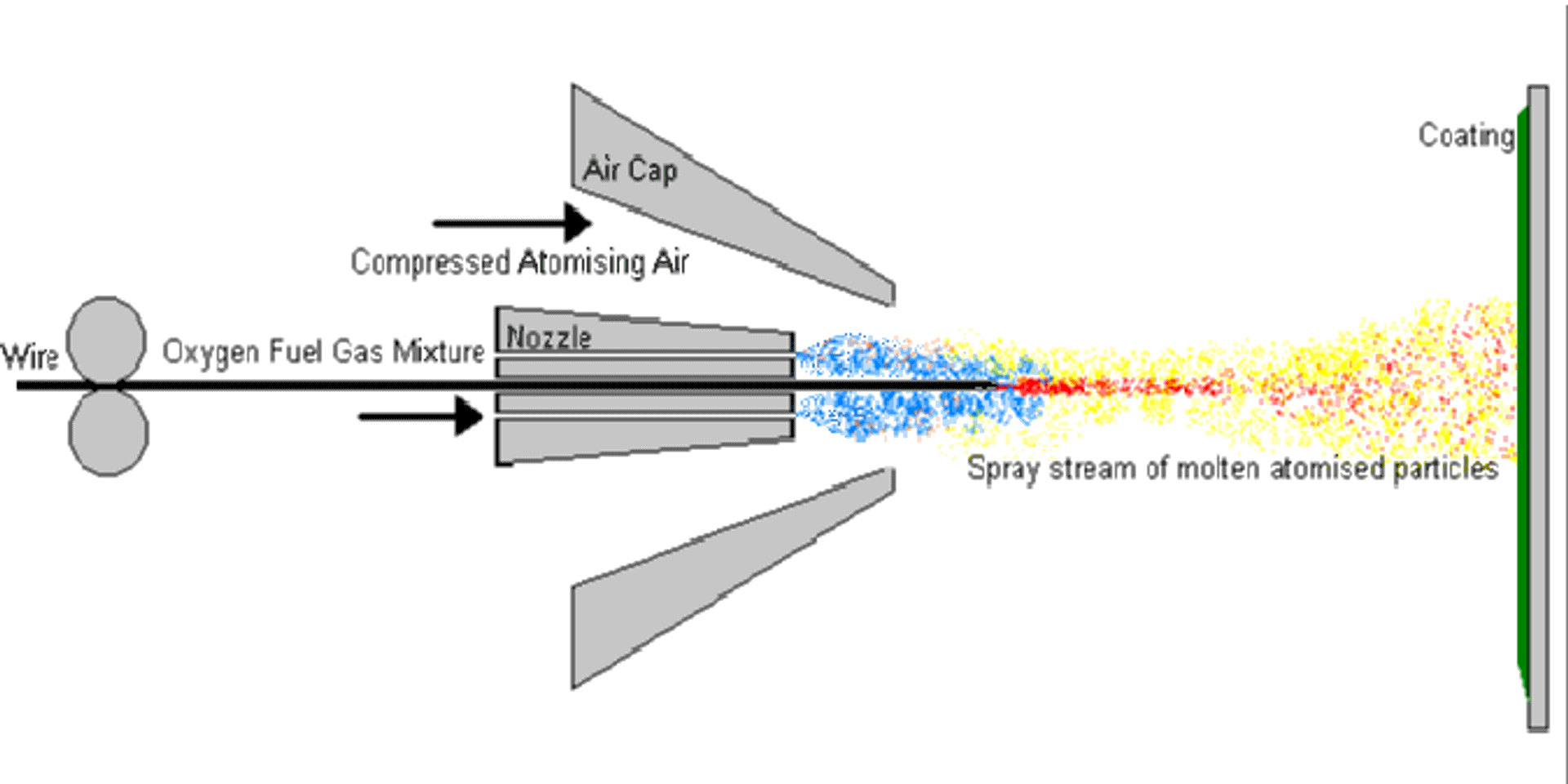

Why thermal spray coatings are preferred over traditional protection processes?
This article demonstrates, "How coatings are developed to protect materials against corrosion and wear in chemical and physical interaction in its environment.
Coatings are developed to protect materials against corrosion and wear in chemical and physical interaction in its environment. Corrosion and wear issues still occur at large scale in diverse industrial applications that result in the degradation and ultimate failure of components and systems in processing and manufacturing industries and in service life of various components. Different processes can be used to perform suitable surface protection that can perform in specific conditions. They are often distinguished by coating thickness, deposition of thin layers and thick layers.

Thermal spraying includes a group of coating process in which finely divided metallic or non-metallic materials are accumulated in molten or semi-molten condition to develop a coating. The process is usually performed at atmospheric pressure in air except plasma spraying, essentially served in soft vacuum. Additionally DC plasma spraying can be performed in inert atmosphere or vacuum and cold spray is normally performed at atmospheric pressure however in a controlled atmosphere chamber to collect and recycle the spray gas due to large gas flow rates utilized.
Coating processes involved using thermal spray wire are used to spray against wear and corrosion even also protect against heat and for service purposes. The selection of spray process is firmly based on the required coating characteristics for the application and coating deposition cost. Coating characteristics are determined by the coating material, the form in which it is offered and by the group of parameters utilized to serve the deposition process.
Thermal spray coatings are usually featured by a lamellar structure and the practical contact between splats and substrate or the earlier deposited layers determine to a large level of the coating properties like thermal conductivity, Young Modulus etc. The real contact region varies about 20 to 60% of the coating surface parallel to the substrate. It increases with impact velocities of particles.
Thermal spray coating process involves the arc spray wire material feeding in the hot gas stream. Coatings are developed by flattening and solidification of drops impacting on the part to be covered. These drops can be slightly or fully melted when they are released from powders or fully melted when they developed from atomization of metalizing wires or rods.
The variety of corrosions particularly for coatings can be categorized as – general corrosion following about 30% damage where average corrosion rate on material surface is uniform and as localized corrosion resulting into 70% failures. Other types are galvanic corrosion that occurs when two different metals interact with each other in a conductive solution, an anodic metal being corroded when the more cathodic one is unaffected. The electrolyte plays a major role.
Monel 400 Wire as corrosion protection - To protect application materials from different types of corrosion, Monel 400 Wire is used as thermal spray coating materials. The Coating is performed in a continuous manner and it requires very high corrosion resistant materials like inconel 625 wire to protect materials from all kind of corrosion. Intergranular corrosion occurs when a chemical element is damaged during coating or bulk material production for example in heat processing, pitting is a localized corrosion resulted by depression or pit development on the surface. It occurs in chloride based solutions. Another type of corrosion is transgranular corrosion that occurs due to high static tensile stress in a corrosive media. The attack can be intergranular or transgranular. The coating material and microstructure plays an essential role in this kind of corrosion.
So coatings offer suitable protection against corrosion. Corrosion wear occurs when corrosion and wear are combined causing a faster degradation of the material. A surface that is corroded or oxidized can be mechanically weakened and more likely damaged at higher rate. Additionally corrosion products such as oxide particles that are dislodged from the material surface can act as abrasive particles. With increasing temperatures, reactions with oxygen, carbon, nitrogen, sulfur or flux result in the development of oxidized, carburized, nitride, sulfidized or slag layer on the surface. Temperature and time are the major factors limiting the rate and severity of high temperature corrosion.
The security of structures exposed to moist atmospheres and marine like ships, offshore platforms, seaports is tough. In many cases, the surface to be protected is very large that makes thermal spray coating more economical than painting and other traditional protection processes. Hence thermal spray coating processes are significant protection methods.







